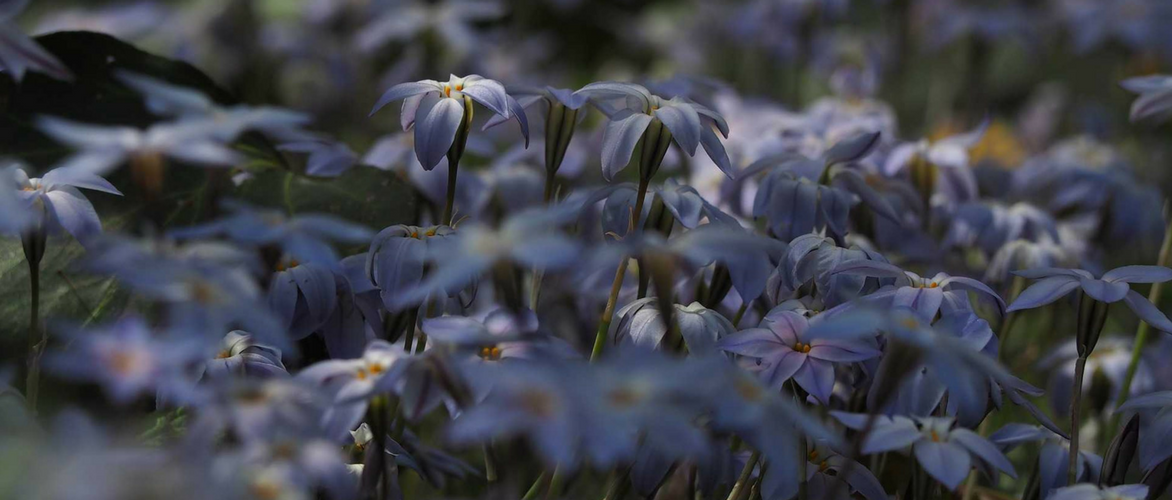
Ipheion: planting, growing and associating
Contents
Ipheions in a nutshell
- Easy to grow, robust, these small bulbs are very floriferous
- Their small star-shaped and fragrant flowers are among the first of the year
- They tolerate both full sun and partial shade
- Low maintenance, they naturalise very easily
- They can be grown in flowering carpets as well as in pots
A word from our expert
Ipheion uniflorum or Tristagma uniflora, also known as Spring Starflower, is a lovely little bulbous flower that blooms early (as early as December in mild climates) and grows everywhere, requiring no maintenance. Its star-shaped, fragrant flowers in shades of blue, white to mauve are among the very first of the year and brighten shaded areas of the garden in winter. Blue Ipheion uniflorum ‘Wisley Blue’ and ‘Rolf Fiedler’, along with white varieties ‘White Star’ and ‘Albert Castillo’, these small, inexpensive spring bulbs that are easy to naturalise, over the years form very floriferous carpets in short grass meadows and prairies or large beds among perennials, at the foot of bushes, in rockeries, in sun or in the shade of a light woodland. The leaves of Ipheion, also known as “Inca Garlic”, resemble soft herbs and are edible, adding an alliaceous scent to salads. Discreet yet bright, Ipheion brings a touch of freshness to the garden as well as in container arrangements alongside other spring bulbs such as daffodils, jonquils, wood anemones, hyacinths, and botanical tulips… Pure white, rosy mauve, or cobalt blue, choose the Ipheion that suits you from our collection to create beautiful spring planters or to flower the garden from late winter to late spring.
Botany
Botanical data
- Latin name Ipheion uniflorum, Tristagma uniflorum, Triteleia uniflora
- Family Amaryllidaceae/Liliaceae
- Common name Ipheion uniflorum, Star of the Spring
- Flowering From December to May in mild climates
- Height From 0.10 to 20 cm
- Exposure Sun, partial shade
- Soil type Clayey, stony, calcareous
- Hardiness below -15°C
Ipheions uniflorum (because they bear a single flower) also known as Tristagma uniflora or Stars of the Spring are delightful little perennial bulbous plants from the Amaryllidaceae/Liliaceae family, like garlic and onion; a relationship revealed by the alliacé scent released by the leaves when crushed. These South American plants naturally grow in the meadows and rocky highlands of Argentina. From these mountainous origins, Ipheions have retained a rustic and low-maintenance character. They acclimatise everywhere and can withstand temperatures from -10° to -15°C for a short period in our regions. Beneath their delicate appearance, Ipheions are robust bulbous plants that are easy to grow, indifferent to both heat and drought.

From their mountainous origins, Ipheions have retained a beautiful hardiness
The genus includes ten species, the most widespread being Ipheion uniflorum, which bears pale lavender flowers. Today, various cultivars with more varied colours are distinguished from the type species; such as Ipheion Uniflorum ‘Charlotte Bishop’, with mauve-pink flowering, ‘Froyle Mill’ with purple flowers, ‘Wisley Blue’, lilac blue. ‘White Star’ and ‘Alberto Castillo’ are distinguished by their white flowers.
Ipheions have a low, spreading habit, forming beautiful floriferous ground covers to the point of sometimes becoming invasive. In two to three seasons, the initially planted bulb produces bulblets or bulbils that multiply quickly and for a long time in well-drained soil. This small bulbous plant sometimes self-seeds spontaneously but especially naturalises easily on slopes, in rockeries or borders. They can remain in the ground and reliably flower each spring, year after year. Dividing the clumps every 5 years will help maintain the plant’s vigour.
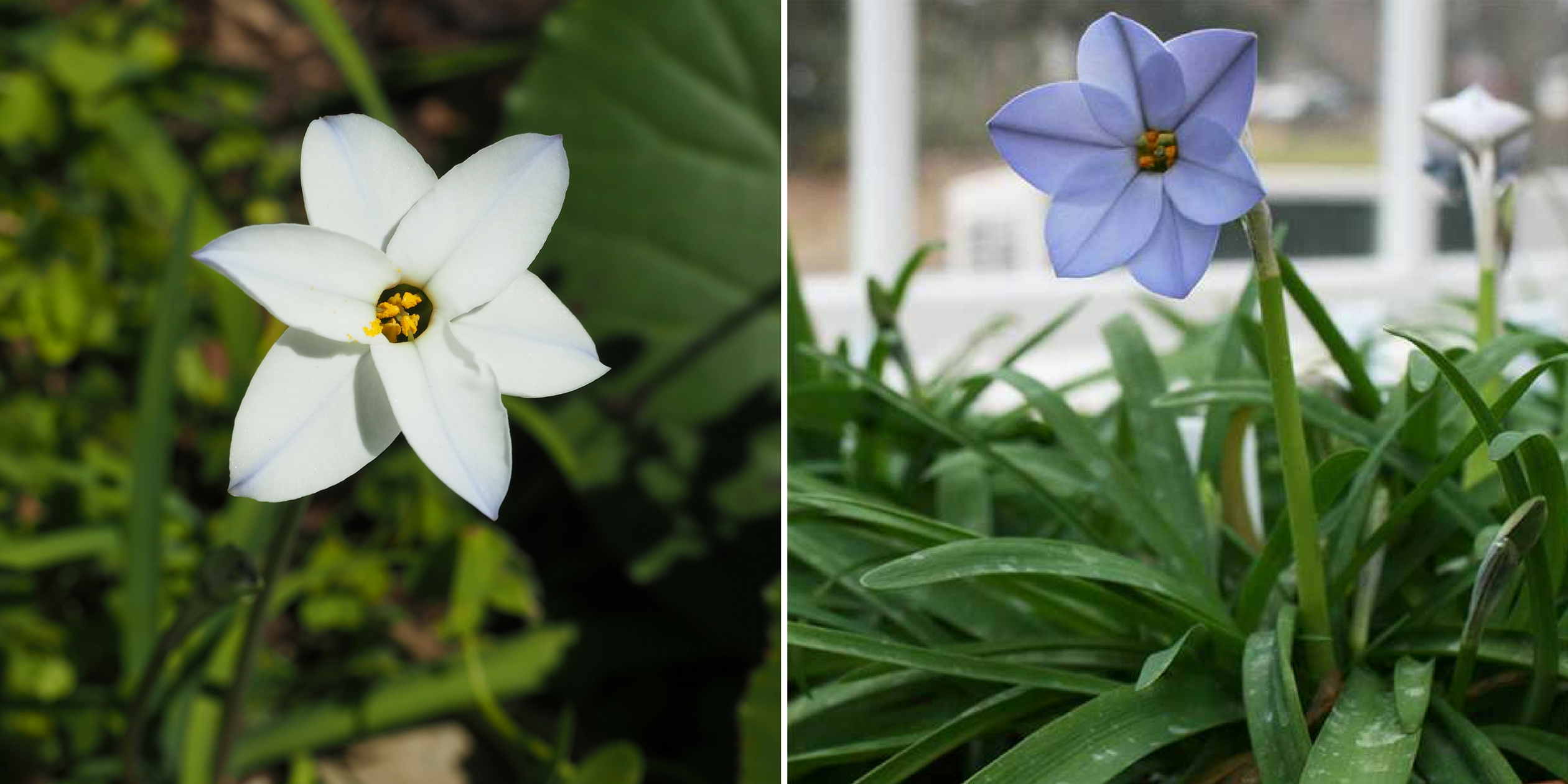
Ipheion ‘White Star’ – Ipheion uniflorum ‘Rolf Fiedler’
Ipheions are appreciated for their very early and very long spring flowering that brightens shaded areas of your garden in winter. This flowering lasts continuously for 2 to 3 good months, from February-March to May, starting in December in mild climate regions, peaking in March and April. Each bulb produces several well-erect and graceful flower stems, 10 to 30 cm tall. At the end of winter, alongside the first crocus, the small star-shaped flowers, solitary or in pairs, measuring 1 to 4 cm in diameter, appear. The dark centre contrasts with yellow stamens.
Looking skyward, they consist of 6 petals (tepals) that are more or less pointed, with size and colour varying from white to pale blue or lilac, depending on the varieties. Some Ipheion uniflorum bear large pure white star-shaped flowers, while others like ‘Wisley Blue’ are lilac blue, ‘Rolf Fiedler’ has small round cobalt blue stars, and more rarely, mauve-pink or violet-pink flowering. Some are striated with more pronounced midrib veins, while others offer beautiful blue gradients. All exude a sweet honey scent.
The bulb produces a dense tuft of trailing leaves resembling soft grass by the end of summer. In autumn, Ipheions develop deciduous, gramineous foliage. In summer, the leaves turn yellow and then disappear: the plant enters a period of dormancy. The linear, ribbon-like green or bluish-green leaves, 20 to 30 cm long, release an alliacé scent when crushed, hence the nickname Inca garlic given to Ipheion, and are edible.
Ipheions uniflorum are vigorous bulbous plants that grow well in both sunny and semi-shaded areas. Easy to cultivate, they accept almost all types of soil, even slightly dry or calcareous, provided they are well-drained and light. They enjoy warm, dry summers and dislike heavy, wet, and waterlogged soils in winter.
They thrive in many situations and create delicate and fresh scenes. For a beautiful decorative and spectacular effect, plant them in masses, in groups of about fifty bulbs, as a flowering carpet, as ground cover at the foot of deciduous trees with spring flowering, along pathways, in rockeries, in scree gardens, along walls, or scattered in the lawn.
The Stars of the Spring are also very well suited for cultivation in spring planters. The small bulbs of Ipheion fit anywhere between already established plants and thrive alongside many other early, easy-going spring bulbs such as Crocus, Cyclamens, Daffodils, Muscari, Hyacinths, and early botanical Tulips. Hellebores and Euphorbias are also good companions.
Species and varieties
The genus includes ten species, the most cultivated of which is Ipheion uniflorum, which bears pale lavender blue flowers. Today, various cultivars are distinguished from the type species, featuring a range of colours from pure white to mauve (‘Charlotte Bishop’), purple as seen in ‘Froyle Mill’, or lilac blue (‘Wisley Blue’). ‘White Star’ and ‘Alberto Castillo’ are notable for their white flowers.
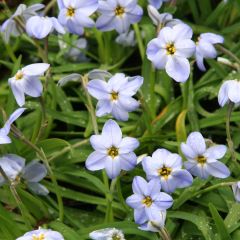
Ipheion uniflorum Rolf Fiedler
- Height at maturity 15 cm
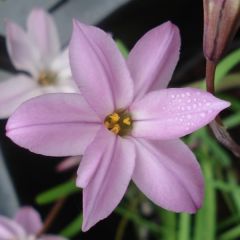
Ipheion uniflorum Charlotte Bishop
- Flowering time March to June
- Height at maturity 15 cm
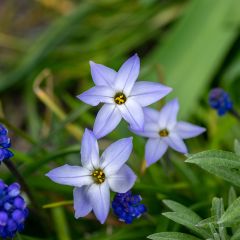
Ipheion uniflorum Wisley Blue
- Flowering time March to June
- Height at maturity 15 cm
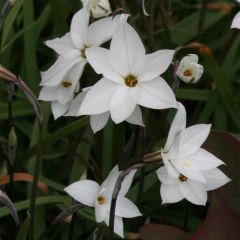
Ipheion uniflorum White Star
- Flowering time April to June
- Height at maturity 15 cm
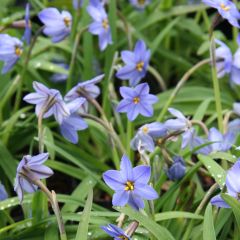
Ipheion uniflorum Jessie
- Height at maturity 15 cm
Discover other Ipheion
View all →Available in 1 sizes
Available in 1 sizes
Available in 1 sizes
Available in 1 sizes
Available in 2 sizes
Available in 1 sizes
Available in 1 sizes
Available in 1 sizes
Available in 1 sizes
Available in 1 sizes
Planting
When to plant Ipheion uniflorum?
Plant these small bulbs in autumn, ideally in September or October, either in the ground or in pots.
Where to plant these starry flower bulbs?
Not demanding regarding soil type and exposure, the Ipheions quickly form flowering carpets. They fit in anywhere, between established plants, and will spread naturally. They will create splendid mass effects in short grass meadows and prairies or large flower beds, among perennials and at the front of bushes, in rockeries, along walls, in sun or shade of a woodland. They can be planted in ordinary, fairly fertile, fresh but especially well-drained soil: they do not appreciate excess water. Some even tolerate dry soils in summer. Moderately hardy, (-10 °C to -15 °C), in regions with harsh winters, mulch the soil to protect them.
They also make beautiful flowering pots on a window or terrace. They thrive alongside a variety of other early spring bulbs that are easy to grow, such as Crocuses, Daffodils, Muscaris, Hyacinths, or even early Tulips.
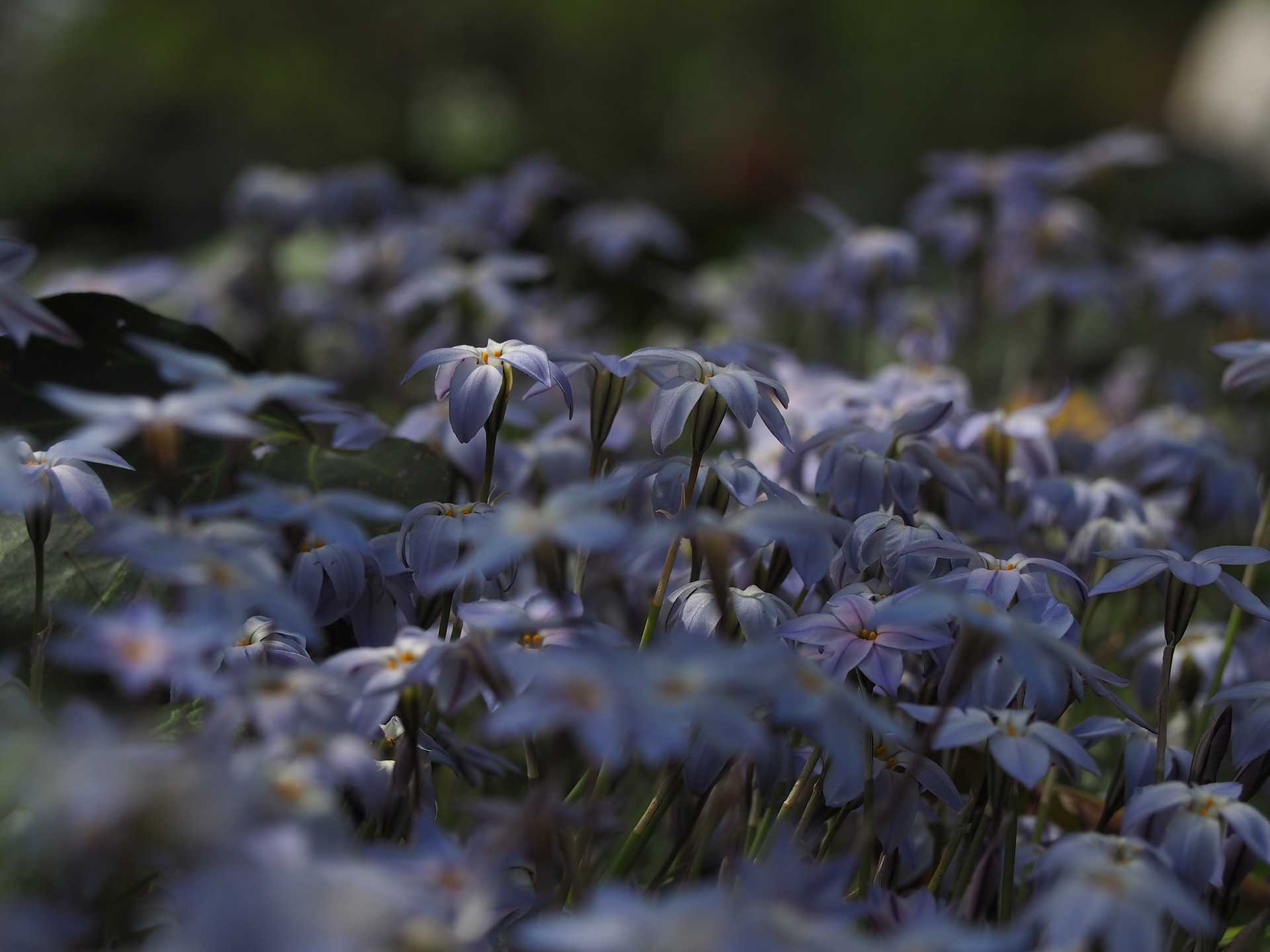 The Ipheions quickly form flowering carpets
The Ipheions quickly form flowering carpets
How to plant?
Plant generously, the Ipheions should be planted in numbers, in well-drained soil to prevent bulb rot, in groups of at least 50 bulbs to achieve maximum decorative effect. They can remain in the ground and will reliably bloom each spring, year after year. Thanks to their early flowering and low cost, these naturalised bulbs are perfect for creating colourful and flowering carpets early in spring in gardens.
- Loosen the soil deeply
- Improve drainage if necessary with a mix of gravel and soil or laid as a bed under the bulbs
- Plant at a depth of 8-10 cm, bulb tip facing up
- Space the bulbs 5 cm apart
- Cover the bulbs with twice their height of soil
- Water moderately in case of soil dryness
- Protect them from slugs and snails that love young shoots
Pot culture of Ipheions
Prefer a sunny spot on the terrace or balcony. You can also plant them in pots in the year of purchase before transferring them to the ground.
- Spread a layer of clay balls at the bottom of the pot for perfect drainage
- Fill the pot with a mix of garden soil, potting soil, and pumice
- Plant closely (about ten bulbs per pot), ensuring the bulbs do not touch each other, and cover with twice their height of soil
- Water once or twice a week during the growth period
- Stop watering completely during the dormancy period
- Apply liquid fertiliser once a month
→ Learn more in our advice sheet: Grow Ipheion in the ground or in pots
Care
Ipheions are easy plants that require no care. No pruning is necessary. In cold regions, provide protective mulch in winter or prefer pot planting. Water once or twice a week during the growth period, but stop watering completely during the summer dormancy, only watering in case of prolonged drought.
Avoid cutting the foliage before its natural yellowing to encourage the regeneration phase of the bulb, ensuring beautiful flowering the following year.
For potted plants, water once or twice a week and provide liquid fertiliser once a month if necessary. Protect them from slugs and snails that enjoy the tender shoots. After five years, you can divide overly compact clumps and replant the bulbils from the initially planted bulbs, thus expanding the covered area and promoting the vigour of the flowers.
Multiplication
The germination of Ipheion seeds is long and unpredictable; a young plant from sowing will take 3 years to flower. We recommend division instead, which is very simple to do.
Division of Clumps
After 4-5 years, you can divide the clumps. Do this in June and until early autumn when the leaves turn yellow, as this is the best time.
- Lift the clump with a fork
- Gently separate the parts by hand
- Replant the removed clumps immediately
- Water a little
Division of Bulblets
When the foliage turns yellow, you can divide the bulblets or bulbils of Ipheion.
- Lift the clump with a fork
- Gently separate the bulblets around the mother bulb by hand or with a small knife
- Replant them immediately in the ground or in pots
- Water a little
Associate
With their bright flowering, Ipheions illuminate the shaded areas of your garden in winter. They thrive in many situations and gently but surely spread in natural-inspired gardens without gardeners or weekend gardens, forming a floral carpet, in clear undergrowth at the foot of deciduous trees, scattered in the short grass meadow, to dress a path border or a sunny rockery, or even in pots on a terrace or balcony. Versatile, they pair well with a multitude of plants that, like them, require little care and maintenance.
Planted in numbers, these mini bulbs create very floriferous blue, white, or even mauve carpets alongside other spring bulbs to naturalise such as Daffodils, Jonquils, Muscari, Snowdrops, Botanical Tulips, Wood Hyacinths, Reticulated Irises, Erythrones. Choose Forest Anemones that bloom a little later to accompany them. Hellebores, Cyclamen Coum, which bloom at the same time as Ipheions, are also good companions, while Lungworts and Spurge will look stunning paired with these small spring bulbs. Perennials like violets, dead nettles, Vinca Minor, or even Lily of the Valley will take over from the somewhat unsightly spring bulbs after flowering.
Ipheions create beautiful fresh scenes of white/blue imbued with delicacy at the heart of spring. All are suitable for pot cultivation on a windowsill or balcony mixed with Pansies, small Daffodils, Crocus, Forget-me-nots, or primroses.
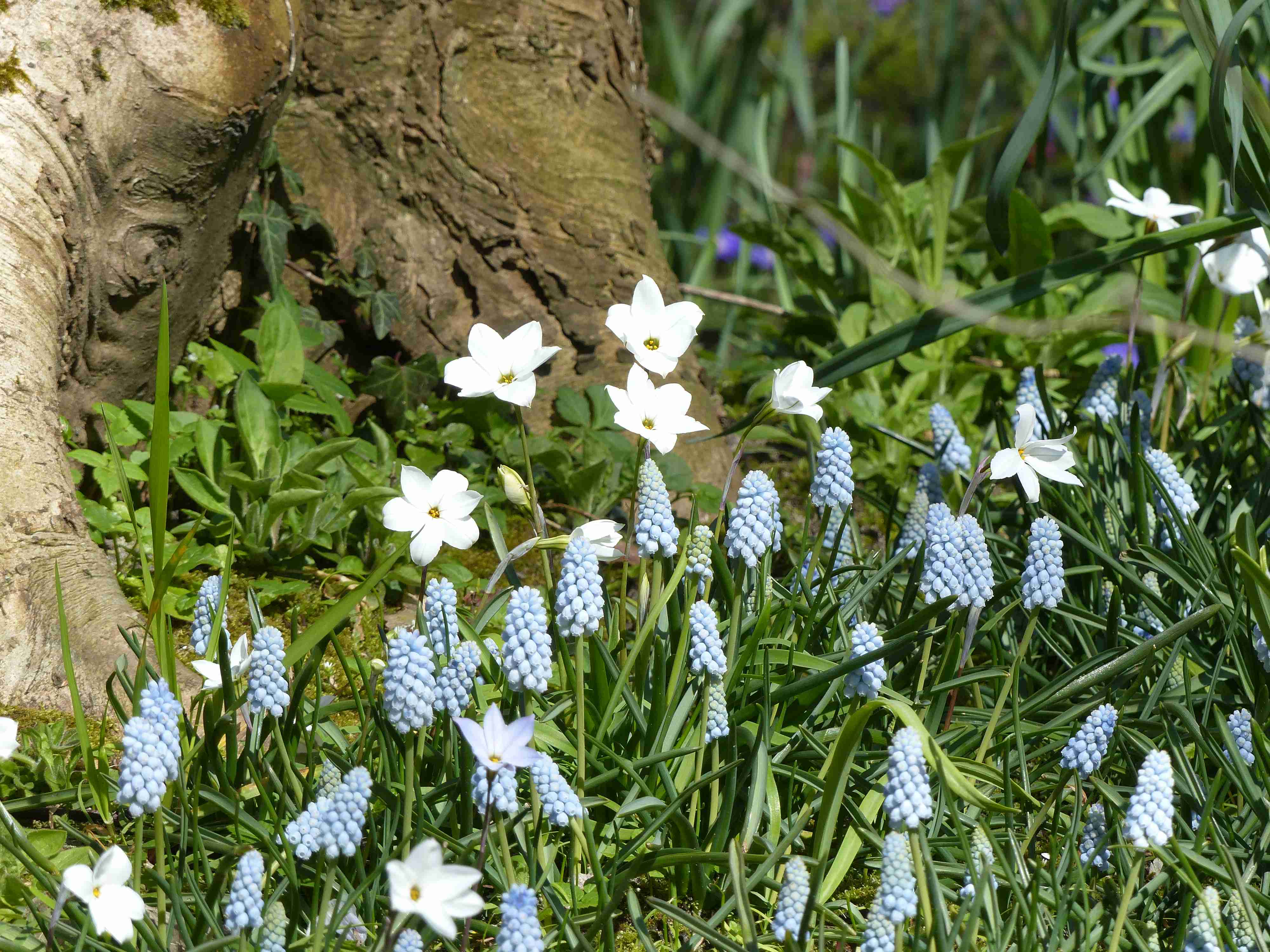
Muscari ‘Valerie-Finnis’ – Ipheion ‘Alberto-Castillo’
To go further
Discover our wide range of ipheions in our online nursery.
Our advice sheet: 9 blue flowering bulbs that you must have in your garden
Our Depth Guide for spring bulbs
Frequently asked questions
-
Is it normal for the foliage of my Ipheion to turn yellow?
Yes, after blooming beautifully throughout spring, in summer, Ipheion enters a period of summer dormancy. The leaves then start to yellow. Even if you find this gives a somewhat unsightly appearance to your flower beds, only cut the foliage when it has completely faded, to allow the bulb time to replenish its reserves.
-
I planted Ipheion bulbs in autumn and nothing grew in spring, why?
If Ipheions are not very demanding regarding the nature of the soil, they do require well-drained and light soil: they do not appreciate excess water, especially in winter. They enjoy hot, dry summers and dislike heavy, damp, and waterlogged soils. To prevent bulb rot, which can lead to their premature death, ensure that when planting, you add a well-draining mix to your soil by incorporating compost, turf, and pumice.
- Subscribe!
- Contents
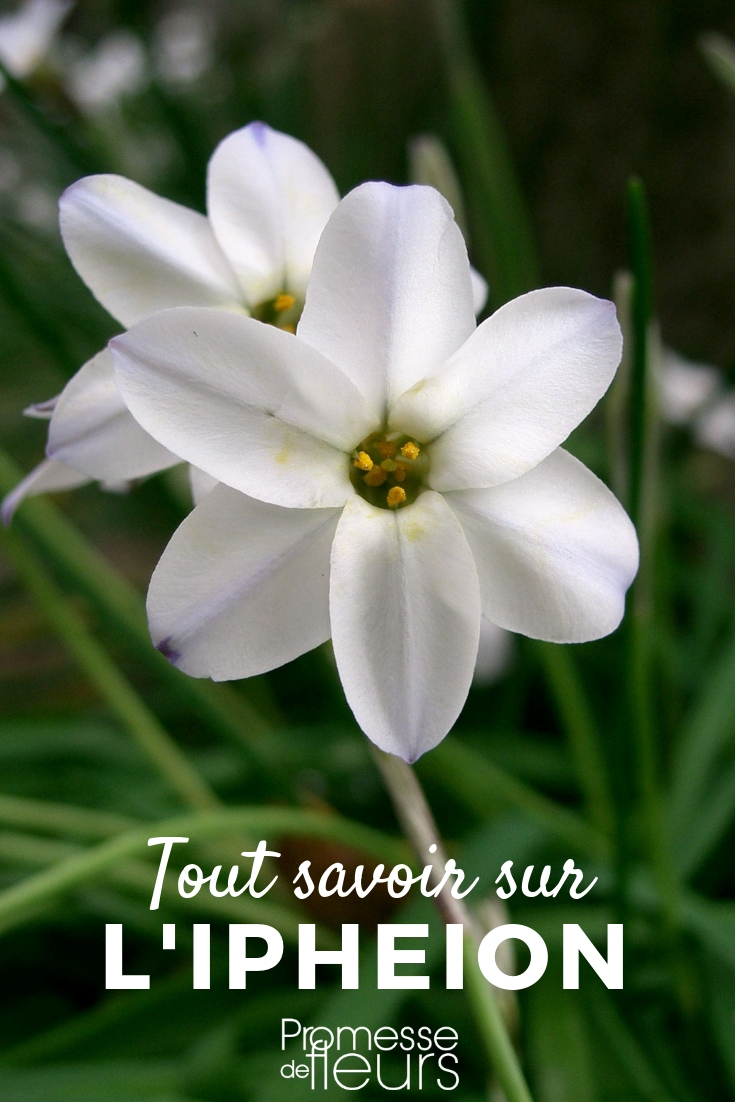

































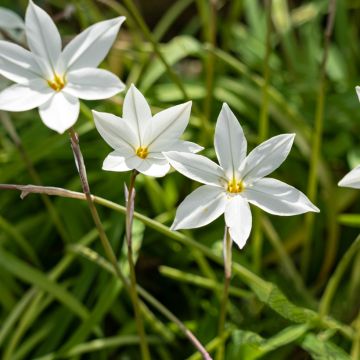
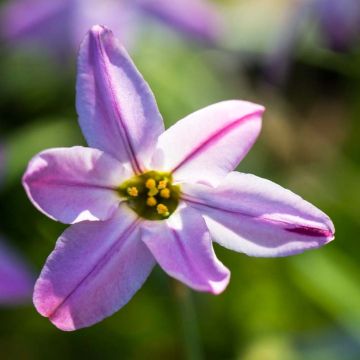
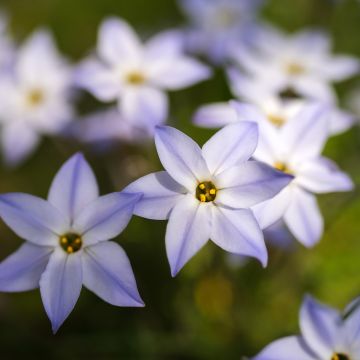
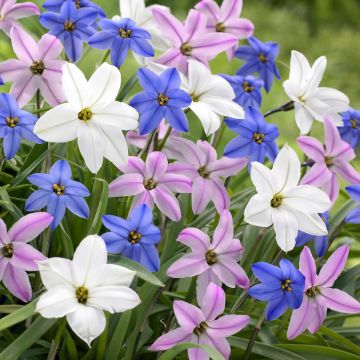



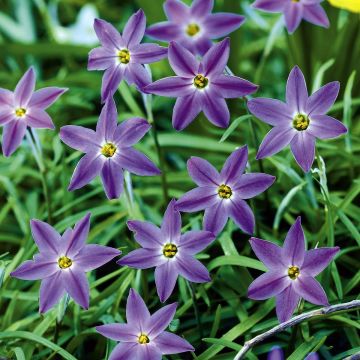
Comments